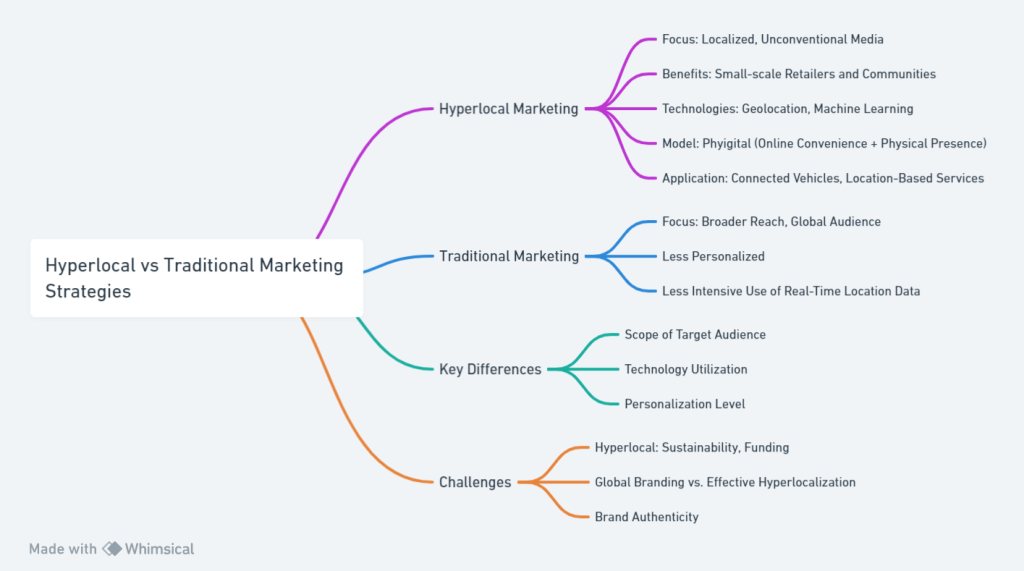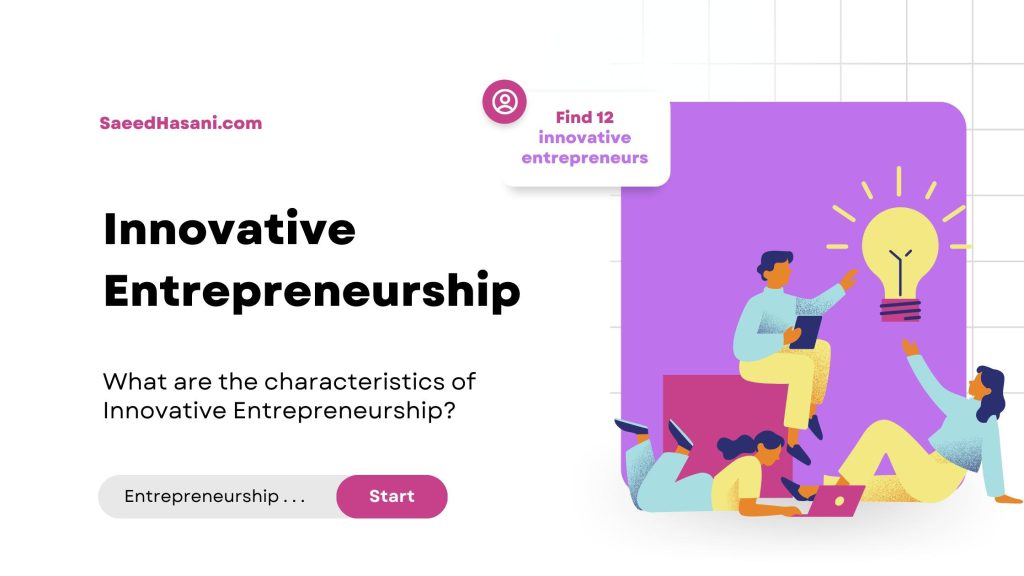Dominating the Local Scene: 10 Powerful Hyperlocal Social Media Marketing Strategies for Business Success

Are you ready to transform your business and dominate the local scene? Discover the game-changing world of Hyperlocal Social Media Marketing in our latest blog post!
Explore the pillars of Hyperlocal Social Media Marketing, including information diffusion, strategic frameworks, community engagement, and the integration of cutting-edge digital technologies.
Elevate your business with tailored, community-focused marketing that speaks directly to your local audience. Don’t miss out—read our blog now for a successful hyperlocal presence! Start here:
Content Overview:
Unpacking Hyperlocal Social Media Marketing
Hyperlocal marketing is reshaping the digital landscape by catering to local community needs, diversifying revenue streams, and forming symbiotic relationships with local businesses and media. This approach creates a dynamic ecosystem, essential for economic resilience.
In Kozhikode, India, hyperlocal e-commerce thrives on community ethos, showing the importance of such platforms in the digital marketplace . Hyperlocal journalism engages and builds communities, while hyperlocal apps benefit small-scale retailers with localized services.
Technologies like 5G and geolocation enhance customer proximity, especially in industries like automotive, where hyperlocal marketing uses location data for personalized services. This synergy of digital marketing and localized strategies marks the significance of hyperlocal marketing in the digital age.
Hyperlocal vs Traditional Marketing Strategies
Comparing hyperlocal with traditional marketing strategies highlights their distinct approaches. Hyperlocal marketing, exemplified by the Hyperlocal Market and Delivery app, focuses on localized, unconventional media options, offering specific benefits to small-scale retailers and communities. This contrasts with the broader reach of traditional marketing, often targeting a global audience.
In the digital era, brands face a tension between global branding and effective hyperlocalization, impacting brand authenticity. Hyperlocal media, an alternative to traditional media, grapple with sustainability and funding challenges, crucial for meeting information needs.
Hyperlocal strategies integrate technologies like geolocation and machine learning, embodying a phygital business model – a fusion of online convenience and physical presence . In connected vehicles, hyperlocal marketing uses location-based services for personalized, immediate consumer engagement, diverging from traditional strategies that less intensively utilize real-time location data.
Overall, hyperlocal marketing offers a tailored, technology-driven, community-focused approach, contrasting with the broader, less personalized nature of traditional marketing.

The Pillars of Hyperlocal Social Media Marketing
The pillars of hyperlocal social media marketing can be understood through various research studies that explore how social media is used to connect, engage, and influence local communities. Here are the key elements that form the foundation of hyperlocal social media marketing:
- Information Diffusion within Localized Networks: Hyperlocal social media marketing focuses on sharing data within a targeted audience, typically in a specific geographic area. This involves creating and distributing content that resonates with local users and fostering a community-centric approach to social media marketing.
- Strategic Framework of Social Media Marketing: A holistic framework for social media marketing is essential, incorporating dimensions such as marketing scope, culture, structures, and governance. This framework helps to position hyperlocal strategies in alignment with broader corporate missions and objectives, ensuring a targeted and effective approach.
- Community Engagement and Local Networking: Hyperlocal social media marketing is not just about broadcasting information but also about creating peer-to-peer neighborhood networks. It involves engaging with the local community, sharing neighborhood stories, and building relationships with local entities, such as businesses and individual residents.
- Integration of Digital Technologies: Utilizing digital technologies, such as mobile applications and social media analytics, enhances the reach and effectiveness of hyperlocal marketing strategies. These technologies help in creating dynamic user networks and facilitate rapid information dissemination tailored to local interests and trends.
- Hyperlocal Event Detection and Recommendation: Advanced systems like SHEDR use deep neural networks to detect and recommend hyperlocal events on social media platforms like Twitter. This technology-driven approach helps in personalizing content and recommendations based on user interests and contextual information, thereby enhancing local engagement .
The pillars of hyperlocal social media marketing are centered around:
- strategic planning,
- community engagement,
- the use of digital technologies,
- and personalized content delivery.
These elements work together to create a powerful and effective hyperlocal presence on social media platforms, catering specifically to local audiences and their unique needs and interests.
10 Proven Hyperlocal Marketing Strategies
Here are 10 proven hyperlocal marketing strategies from my research:
- Effective Hyperlocalization: Brands should tailor their marketing efforts to local cultures and values, ensuring authenticity and relevance to local consumer bases. This nuanced approach to hyperlocalization helps in effectively reaching narrower market segments.
- Integrating Technology and Geolocation: Utilizing technologies such as 5G, geolocation, and machine learning can effectively deliver services and products to customers based on their immediate location, enhancing the customer experience.
- Hyperlocal Market and Delivery Apps: Developing hyperlocal apps for markets and delivery services can cater to immediate local needs, especially benefiting small-scale retailers and merchants.
- Entrepreneurial Passion and Civic Motivations: Fostering entrepreneurial passion and civic motivations can be a driving force for hyperlocal news sites and other local businesses, creating a more engaged and loyal local customer base.
- Diversifying Revenue Streams: Hyperlocal businesses should diversify their revenue streams and forge symbiotic relationships with local media, businesses, advertisers, and communities. This strategy helps in creating a sustainable and resilient business model.
- Location-Based Services for Marketing: Incorporating location-based services, especially in connected industries like automotive, to offer personalized services and advertisements based on customer’s real-time location.
- Avoiding Competition with Legacy Media: Hyperlocal online media should focus on creating unique content and avoid direct competition with established print media, instead finding niches and serving specific community needs.
- Developing a Hyperlocal Grocery Delivery Model: Creating hyperlocal grocery delivery services that connect customers with the nearest available supply in an optimized manner can fulfill immediate local demands and create a competitive edge .
- Customer Development Method for Hyperlocal Marketplaces: Applying the customer development method to analyze and meet the specific needs of target consumers in hyperlocal marketplaces, ensuring the products offered are market fit .
- Utilizing Instagram for Promotion: Leveraging social media platforms like Instagram to create engaging content and collaborate with content creators for promoting hyperlocal attractions or businesses can enhance community participation and awareness .
These strategies emphasize the importance of localizing marketing efforts, integrating modern technologies, and fostering community engagement to successfully implement hyperlocal marketing.
Decoding Local Consumer Behavior: A Strategic Approach.
Decoding local consumer behavior is a crucial aspect for businesses aiming to establish a strong market presence and achieve sustained growth.
A strategic approach to understanding and leveraging this behavior can lead to more effective marketing, product development, and customer service. Here are key steps and considerations in decoding local consumer behavior:
1. Market Research
- Quantitative and Qualitative Research: Use surveys, focus groups, and interviews to gather data on consumer preferences, behaviors, and attitudes.
- Segmentation: Identify different consumer segments based on demographics, psychographics, and behavior. Tailoring strategies to each segment can improve engagement and conversion rates.
2. Data Analysis
- Trend Analysis: Analyze purchasing trends, seasonality, and other patterns. Tools like Google Trends can provide valuable insights into what consumers are currently interested in.
- Competitive Analysis: Understand your competitors’ strategies and how consumers respond to them. This can reveal gaps in the market and opportunities for differentiation.
3. Cultural Understanding
- Local Customs and Values: Different regions have unique cultural aspects that influence consumer behavior. Understanding these can help in designing products and marketing messages that resonate with the local audience.
- Language and Communication: Tailor your communication to reflect local language nuances and preferences. This includes advertising, product labeling, and customer service interactions.
4. Technology Utilization
- Digital Behavior Analysis: Use analytics tools to understand how local consumers interact with digital platforms. This includes website traffic analysis, social media engagement, and online shopping behaviors.
- Mobile Usage: In many regions, mobile devices are the primary means of accessing the internet. Optimizing for mobile shopping and payments can significantly enhance customer experience.
5. Customer Feedback
- Surveys and Reviews: Regularly collect and analyze customer feedback. Online reviews and post-purchase surveys can provide direct insights into consumer satisfaction and areas for improvement.
- Engagement Through Social Media: Use social media platforms to engage with consumers directly. This can provide unfiltered feedback and insights into consumer preferences and pain points.
6. Adaptation and Innovation
- Product Adaptation: Modify products or services to better suit local tastes and requirements. This can include changes to product features, packaging, or even branding.
- Innovative Solutions: Look for innovative ways to meet local consumer needs and solve their problems. This could involve new technology, unique marketing campaigns, or novel distribution methods.
7. Sustainability and Ethics
- Eco-friendly Practices: Increasingly, consumers are looking for products that are environmentally friendly and ethically produced. Highlighting sustainability practices can appeal to this growing segment.
- Community Involvement: Show involvement in local community issues. This can build brand loyalty and trust among local consumers.
Decoding local consumer behavior is not a one-time activity but an ongoing process that requires continuous attention and adaptation. By employing a strategic approach that combines research, technology, cultural understanding, and innovation, businesses can effectively meet the needs of local consumers and achieve long-term success.
How can businesses use social media to target local audiences? 3 real examples!
Businesses can use social media to target local audiences effectively by leveraging various strategies tailored to their community’s interests and needs. Here are three real-world examples of how businesses have successfully done this:
1. Localized Content and Hashtags
A local café in Portland, Oregon, utilized Instagram to attract local customers by posting photos of its unique coffee creations and cozy ambiance, specifically tagging its location and using popular local hashtags like #PortlandCoffee and #PDXeats.
They also engaged with their customers by reposting stories and photos from visitors who tagged the café. This strategy not only increased their visibility among Portland’s coffee lovers but also encouraged more people to visit in person to experience the café’s offerings and potentially get featured on its page.
2. Facebook Events for Community Involvement
A bookstore in Austin, Texas, used Facebook Events to promote local author readings, book clubs, and special sale events.
By creating events and inviting their followers, they were able to reach a broader local audience through event sharing and RSVP features. They also collaborated with local authors and community groups to co-host events, expanding their reach within the local community.
This approach not only helped in increasing foot traffic during the event days but also strengthened their position as a community hub for book lovers.
3. Geo-targeted Ads on Multiple Platforms
A small boutique fitness studio in Brooklyn, New York, leveraged geo-targeted ads on both Facebook and Instagram to reach potential clients within a specific radius of their location.
They created compelling visuals and offers, such as a free first class or discounted membership for new sign-ups, targeting users who showed interest in fitness and wellness within the Brooklyn area.
By using geo-targeting, the studio efficiently allocated its advertising budget to reach the most relevant audience, significantly increasing its new memberships and class attendance.
These examples illustrate the power of using social media to engage and grow a local customer base. By creating localized content, leveraging geo-targeting, and engaging in community events, businesses can effectively reach and attract more local customers.
How to implement a hyperlocal social media marketing strategy? 3 actionable steps!
Implementing a hyperlocal social media marketing strategy involves focusing your efforts on a very specific, local audience to create more relevant and engaging content. Here are three actionable steps to achieve this:
1. Research and Utilize Local Insights
- Identify Your Audience: Start by understanding the demographics, interests, and habits of your local audience. Use social media analytics tools to gather data on your current followers and research local trends and preferences. This can involve looking at popular local hashtags, events, and influencers.
- Engage with Local Events and Trends: Align your content with local events, holidays, or trends. Participating in these conversations can increase your visibility among local users. For example, if your business is in a city hosting a marathon, creating content that ties into the event, offering promotions for participants, or simply showing support can boost engagement.
2. Geo-Target Your Social Media Ads and Posts
- Leverage Geo-Tagging: When posting on social media, use geo-tags to mark your business location or tag the local area your post is targeting. This makes your posts more discoverable to people searching for or interested in that location.
- Use Geo-targeted Advertising: Most social media platforms offer options to target ads based on location. You can set up campaigns to only show your ads to users within a specific area. This is particularly useful for promoting local deals, and events, or if you want to increase foot traffic to your physical location. Tailor your ad content to reflect local culture or language nuances to increase relevance and engagement.
3. Engage with the Local Community Online and Offline
- Collaborate with Local Businesses and Influencers: Partner with local businesses or influencers to expand your reach. This can be through joint events, cross-promotions, or sponsored content. Choose partners that align with your brand values and have a genuine connection to your local area.
- Participate in and Sponsor Local Events: Beyond online engagement, physical participation in community events can significantly boost your local profile. Sponsor local sports teams, charity events, or school functions. Use your social media platforms to promote these events beforehand and share highlights afterward to maintain engagement.
- Create a Community Around Your Brand: Foster a sense of community by encouraging user-generated content. Ask customers to tag your location or use a specific hashtag when they visit your business or use your product. Highlighting this content on your social media channels not only provides authentic endorsements but also strengthens your customers’ connection to your brand.
Implementing these steps can help you create a more focused and effective hyperlocal social media marketing strategy, increasing your visibility and engagement within your local community.
Partnering with local businesses: A new way to expand your business!
Partnering with local businesses is a strategic approach to expanding your business, and creating mutually beneficial relationships that can enhance brand visibility, reach new customer segments, and contribute to community development. Here’s how and why this approach works:
Benefits of Partnering with Local Businesses
- Increased Visibility: Collaboration with other businesses can introduce your brand to new local audiences who might be unaware of your offerings. Joint promotions or events can significantly increase your reach.
- Shared Resources: By pooling resources such as marketing budgets, physical spaces, or expertise, you can achieve more impactful results than working alone. This can be especially beneficial for small businesses with limited resources.
- Enhanced Credibility: Aligning with well-respected local businesses can boost your credibility. Customers who trust one business are more likely to extend that trust to their partners.
- Community Engagement: Local partnerships can strengthen your ties to the community, making your business a more visible and engaged member of the local ecosystem. This can lead to increased loyalty and support from local customers.
- Innovative Offerings: Collaborations can lead to innovative products, services, or events that differentiate your business and provide new value to customers.
Strategies for Partnering with Local Businesses
- Identify Complementary Businesses: Look for businesses that offer complementary products or services, and share a similar target audience, but are not direct competitors. For example, a coffee shop and a bookstore might partner to create a combined offer that appeals to readers looking for a cozy place to read.
- Develop Joint Marketing Campaigns: Create marketing campaigns that benefit all involved parties, such as bundled offers, shared advertising spaces, or co-hosted events. This can be a cost-effective way to attract more customers than individual efforts.
- Engage in Community Events Together: Participate in or sponsor local events, fairs, or charity functions as a united front. This not only increases your visibility but also demonstrates a commitment to the local community.
- Create a Local Business Network: Establish a network of local businesses to share insights, refer customers to each other, and collaborate on larger projects or events. This network can act as a support system, fostering growth and innovation.
- Leverage Social Media for Cross-Promotion: Use your social media platforms to promote each other’s businesses, share content, and highlight joint offers or events. Social media is a powerful tool for reaching a broad audience with minimal expense.
- Offer Exclusive Deals for Mutual Customers: Develop exclusive offers for customers who support both businesses, such as discounts or loyalty rewards. This encourages customers to patronize both establishments, increasing sales and loyalty.
Case Study Examples
- A local gym and health food store partner to offer discounts to each other’s customers, promoting a healthy lifestyle and increasing cross-visitation.
- Two non-competing retailers in a shopping district collaborate on a holiday shopping event, offering special deals and extended hours, driving traffic to both stores.
- A local brewery and food truck organizes a monthly event featuring special brews and menu items, attracting large crowds and generating significant social media buzz.
By carefully selecting the right partners and crafting strategic collaborations, businesses can unlock new growth opportunities, enhance their community presence, and create a more vibrant local business ecosystem.
Influencing the Locals: Building Partnerships with Influencers.
Building partnerships with local influencers is a strategic approach to amplify your brand’s presence and credibility within the community.
Local influencers, with their dedicated and engaged followers, can offer a more authentic and relatable promotion of your products or services to a targeted local audience. Here’s how you can effectively build these partnerships:
Identifying the Right Local Influencers
- Relevance: Choose influencers who share your target audience and whose content aligns with your brand values. Their followers should be potential customers for your business.
- Engagement Rate: Look beyond the number of followers and focus on engagement rates. An influencer with a smaller, more engaged audience can be more effective than one with a larger but less engaged following.
- Authenticity: Opt for influencers who have a genuine connection with their audience and are selective about their partnerships. Their endorsement is more likely to be trusted and acted upon by their followers.
Building the Partnership
- Mutually Beneficial Relationship: Ensure that the partnership offers value to both parties. This could include offering free products or services, payment, or mutual promotion.
- Clear Communication: Be clear about your expectations and goals for the partnership. Discuss content guidelines, key messages, and the timeline for the campaign.
- Creative Freedom: Allow influencers some creative freedom to present your brand in a way that feels authentic to their style and audience. Authentic content resonates more effectively with their followers.
Strategies for Partnering with Local Influencers
- Sponsored Content: Collaborate on content that the influencer posts on their channels, promoting your brand, product, or service. This could be in the form of social media posts, blog articles, or videos.
- Brand Ambassadors: Establish long-term relationships with influencers who genuinely love your brand. As brand ambassadors, they can provide ongoing promotion and lend credibility to your products or services.
- Exclusive Events: Invite influencers to exclusive events, product launches, or behind-the-scenes tours. These experiences can generate exciting content for the influencers to share, showcasing your brand to their audience.
- Community Projects: Engage in community projects or charity events together. This not only enhances your brand’s image but also shows a commitment to the local community.
- Product Collaboration: Work with influencers on product design or development, creating a co-branded item. This can generate significant buzz and give the influencer a deeper stake in the partnership’s success.
- Feedback and Insights: Use influencers as a sounding board for new ideas or products. Their insights can be valuable for understanding customer preferences and improving your offerings.
Measuring Success
- Engagement Metrics: Track likes, comments, shares, and other forms of engagement to gauge the impact of influencer collaborations.
- Traffic and Conversions: Use tracking links and promo codes to measure the traffic and conversions resulting from influencer posts.
- Brand Sentiment: Monitor changes in brand sentiment and recognition within the local community through social listening tools and direct customer feedback.
Building partnerships with local influencers can be a highly effective way to reach and engage your target audience, enhance your brand’s local presence, and drive business growth.
By carefully selecting influencers who align with your brand and crafting strategic, authentic campaigns, you can leverage their influence to positively impact your local market.
In the Future . . .
Hometown Heroes: Creating Region-Specific Campaigns.
Tactical Hyperlocal Advertising Approaches
- Facebook Ads Precision: Targeting the Heart of Communities
- Instagram’s Geotags and Stories: A Local Engagement Goldmine
- Google My Business: Mastering Local Visibility Tactics
Tools and Platforms: Navigating the Hyperlocal Marketing Toolkit
The Mobile Dimension: Hyperlocal Advertising
- Mobile-Centric Trends: The Rise of Local Searches
- Apps in Action: Leveraging Location-Based Mobile Advertising
Sources:







Responses